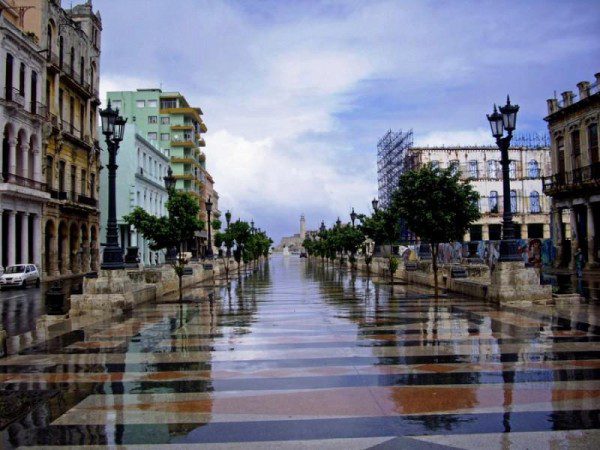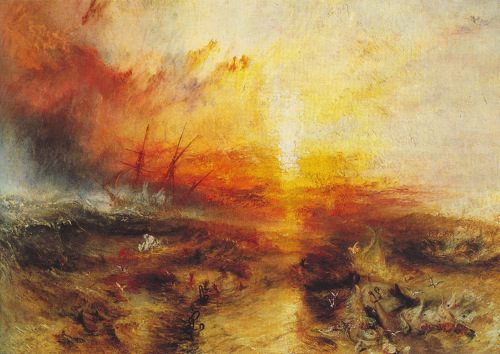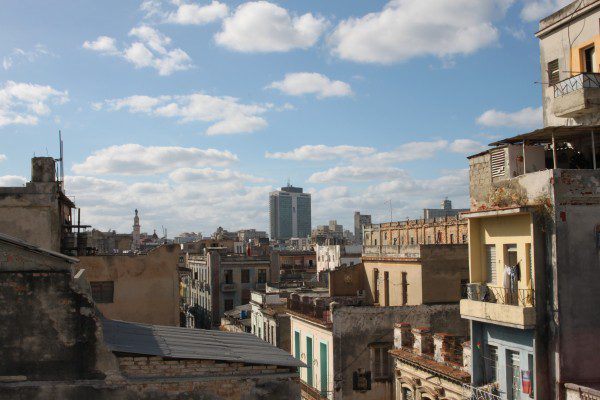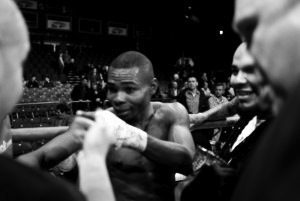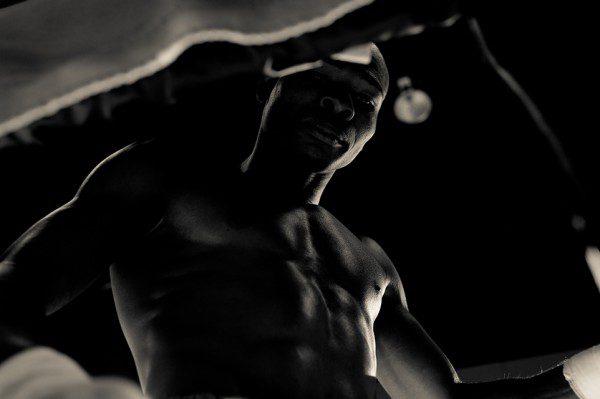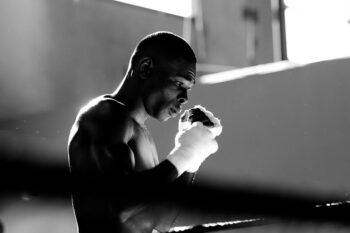
The plane began its descent over the last 90 haunting miles of sea that divides Cuba from the United States, a sea that might be the largest graveyard in the world. Out my window the sunset glazed over the surface of the ocean and glinted off the slits and nicks of wave-creases like fresh wounds. Up and down the plane I heard the slap of blinders yanked down over the windows while the rest of us eagerly took in the view. It’s this last homestretch that always fleshes out the tourists from the locals on flights to the island.
There are plenty of tragic and inspiring choices, but the most obvious legacy Castro will leave behind is the broken family.
As the plane touched down at Jose Marti Airport I still wasn’t sure I would be allowed to enter Cuba in the first place. I had spent my last trip a few months earlier conducting illegal interviews with the country’s most famous boxing champions, men who had turned down millions and were only willing to discuss it if I paid them under the table. Of course there was no official way to have these interviews given the sensitivity of the topic. The state security had started following me after the first interview. All the Cubans I was working with couldn’t understand why we weren’t being arrested. But we kept going until we landed every interview on my wish list. Then it was just a matter of getting that material out.
While I probably should have quit while I was ahead, my purpose this time around was to knock on the door of one of the most politically radioactive residences in the country—the wife of Guillermo Rigondeux, a 30-year-old two-time Olympic boxing champion, branded by Fidel Castro as a Judas and traitor to the Cuban people. I was there to track down the family of one of the most notorious defectors in Cuban history.
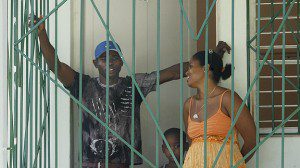 Since Rigondeaux had escaped on a smuggler’s boat (venture humanitarianism between Cuba and Cancun has thrived enormously the last few years) and become a permanent exile, his family had been living under 24-hour surveillance and nearly house arrest. Cuban state security doesn’t fuck around. As attractive an analogy it might be for any foreigner to view Rigondeaux as a kind of Orpheus, a highly charged defector forever abandoning his life, nobody is in any hurry to have a camera and a microphone placed in the face of Eurydice to discuss the matter. The official state version of events is quite sufficient, muchas gracias. Bienvenido a Cuba!
Since Rigondeaux had escaped on a smuggler’s boat (venture humanitarianism between Cuba and Cancun has thrived enormously the last few years) and become a permanent exile, his family had been living under 24-hour surveillance and nearly house arrest. Cuban state security doesn’t fuck around. As attractive an analogy it might be for any foreigner to view Rigondeaux as a kind of Orpheus, a highly charged defector forever abandoning his life, nobody is in any hurry to have a camera and a microphone placed in the face of Eurydice to discuss the matter. The official state version of events is quite sufficient, muchas gracias. Bienvenido a Cuba!
Everyone on the island knows that at Castro’s first trial, when he was asked to confess who was intellectually responsible for his attack against Batista, he proclaimed it was none other than “a poet.” But whether Cuba’s Comandante likes it or not, his country is poetry of a different order, something like 1984 penned by Charles Dickens.
The first African slaves were brought to the island as far back as 1520, a measure taken after the Spanish were in need of replenishing the native Indian population (300,000 at the time Columbus first encountered them) they had wiped out through a combination of genocide, disease and brutal labor. Many Indians were so desperate to escape the calamity of their lives under Spanish rule that they attempted suicide by trying to choke on dirt. This concern ceased after the Spanish warned of severe punitive measures on the family members of suicides.
One of the most famously brave Indian chiefs, Hatuey, captured, tied to a stake and about to be set ablaze, was offered conversion by the Spanish if he accepted Jesus. Hatuey asked the religious man holding the flame if indeed any Christians were in heaven. He was assured there were. Hatuey replied that he would rather burn and be sent to hell than ever again encounter people as cruel as the Spanish.
When Columbus first saw Cuba in 1492 he described it as “the most beautiful land human eyes have ever seen.” He asked the first local he could find if he had arrived on an island, and was assured that he had, but that it was infinite.
I’ve never been able to get the wrapping paper off trying to imagine the expression on the face of the man who told Columbus that.
“Hope, Hope, fallacious Hope!/Where is thy market now?” -J.M.W. Turner
Almost 300 years later, on November 29, 1782, the events depicted in Joseph M. W. Turner’s famous painting, The Slave Ship, unfolded. First known as the Zong Affair, and decades later as The Zong Massacre, the story goes something like this: With a business disaster looming—slaves were dying at more than the usual rate—Captain Collingwood ordered some of the Zong’s human cargo—122 shackled African men, women and children—thrown overboard into the shark infested waters of the Caribbean. Another 10 slaves threw themselves overboard in a display of defiance at the inhumanity.
These 132 deaths left the captain with high hopes of filing his insurance claim: lost-at-sea slaves would be insured, dead-on-arrival slaves would not.
At the trial for insurance fraud, England’s Solicitor General stated:
“What is this claim that human people have been thrown overboard? This is a case of chattels or goods. Blacks are goods and property; it is madness to accuse these well-serving honorable men of murder… The case is the same as if wood had been thrown overboard.”
In 2009, 228 years after the Zong disposed of its cargo in the Caribbean, another boat carrying human beings—who’d also been bought and sold on the market place—sped under cover of night across the same Caribbean waters. This time the boat was headed for Mexico, where a ransom masquerading as a fee was to be paid for the lives of the men, women and children being transported. Three of the occupants on the smuggler’s boat were elite Cuban boxers. One of those boxers was Guillermo Rigondeaux. Despite over 400 fights inside a ring against the greatest boxers in the world, Rigondeaux would describe this journey, with immense reluctance, as the most traumatic event of his life.
“There may be no entrapped pool of human talent left on earth with the dollar value of Cuban athletes.”
-Michael Lewis
***
On May 2nd, 2011, the most dangerous man in the world was found and killed in Pakistan. Nothing about this event, however, was reported in Havana or across Cuba by the Cuban state. No interruption on the news. Nothing in either of the two state newspapers. No celebration or protest in the streets. And while it was true that few Cubans had access to the Internet, there seemed to be not even an acknowledgment of the event if anybody had found out. Not even Radio Bemba (Cuban slang for the rumor mill) had picked up the signal.
It was just any other day in the land where Christmas had been illegal until 1997 (the same day El Duque, the most famous baseball player in the country, had defected) and they received and rejected cashing their annual $4000 check issued by the US Treasury for leasing the Guantanamo base (an unlimited lease, by the way, that no Cuban had ever negotiated), which they had done since Castro rose to power. Terrorists against Cuba who had once shot down passenger jets later found safe haven in Miami. Yet, here in Cuba—a country still listed as a “state sponsor of terror” by the US—Bin Laden’s death caused no ripples one way or the other.
I only discovered the news by overhearing a sunburned tourist mention it near Havana’s Central Park, in La Esquina Caliente (the hot corner), where the men, many with official documentation as “professional fans,” gather to argue about baseball. The tourist’s wife was filming him arm-in-arm with a fourth-rate Che Guevara lookalike who regularly posed for pictures in front of the hotels. The tourist was wearing the unofficial uniform of all tourists in Cuba—Che Guevara t-shirt and single-starred beret—and the lookalike had successfully capitalized on the heartbreakingly predictable coincidence.
The tourist was celebrating Bin Ladin’s death by smoking and handing out Cohiba cigars. An individual Cohiba would cost you about the same amount that a Cuban brain surgeon or lawyer makes in a month and a half of work. But the tourist knew somebody who’d died in the towers. There was real joy on his face doling out the cigars and giving some to his wife to pass out from the box. He said he’d already seen the crowds cheering outside the White House on CNN. He announced he was off to get across the park to the Floridita to get drunk with Hemingway’s statue. Some eyes in the park watched him while the police monitored the situation from several street corners. This last trip it had felt as if there were more cameras around Havana than Times Square.
The last of the cigars was handed out and the Che lookalike was paid and went back in search of other tourists. It took me a long time to let this scene go.
When you first come here and find things to enjoy much faster than you’ve earned, they’ll inform you that everybody deserves to have Havana as their hometown. What you’ll have to discover for yourself is that if Havana really were your mother, there would never be a way of truly making anywhere else a wife. Cubans are cursed whether they find a means of escape or remain. There isn’t anyone you’ll meet here who doesn’t know a handful of people close to them who were forced to choose in what order to abandon their lives. Needless to say, it leaves quite an impression.
I’d arrived from New York City. Like that tourist handing out cigars, I, too, had a family member in one of the towers that had been struck by a plane. Both my wife’s parents were within a few blocks and had to be evacuated. I’d gleaned a fair bit of the collateral damage from that event. Yet I had serious trouble understanding how to cheer on the news of Bin Laden or anyone else dying. There was a handy distraction in the Che t-shirt the tourist was wearing while celebrating the death.
The year that Che Guevara left Cuba and his family to fight and die in Bolivia in an effort to help liberate the peasants there, the United States government had listed Che, as they would Bin Laden, the most dangerous man in the world. As with Bin Laden, the US gave the order to execute him.
Where exactly could I look to find the symmetry between these two men beyond the obvious: that they were both, in their time, the greatest source of anxiety for America? Was there any point in looking? Many years down the road, would that tourist’s grandson be wearing an Osama t-shirt celebrating the death of another terrorist? What symbol couldn’t America recycle into kitsch? Was Che anything more than a cheap karaoke of what he stood for?
“If the nuclear missiles had remained (in Cuba) we would have fired them against the heart of America including New York. We must never establish peaceful coexistence.”
-Ernesto “Che” Guevara
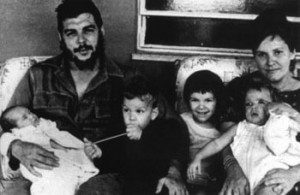 But the last words Che left for his family in a letter were these:
But the last words Che left for his family in a letter were these:
“Above all be sensitive, in the deepest areas of yourselves, to any injustice committed against whoever it may be anywhere in the world.”
I guess what really troubled me about all this was wondering to what extent, taken far enough, these words were consistent or an aberration from the substance that made him so threatening?
Since the first day I arrived in Havana as a kid trying to track down the real-life 103-year-old hero from The Old Man and the Sea still living in Cojimar, or seeing if I could bribe an Olympic champion boxer to help me with my amateur boxing career, I’ve walked down the Prado promenade every chance I could get. Prado was the first name I recognized here since I used to live a few blocks from the Prado museum in Madrid when I was 20. I was living there when the Atocha train station was bombed down the street some years later. Both Prados have enough magic that, after you visit them, the whole world feels like their gift shop for a few hours. For Havana’s Prado, the sooner after dawn you arrive the more birds there are in the trees. On the weekends the birds and stray cats keep the artists company as they set up their displays. Later schools empty out children, who race over to play games under the shade. At night jineteras stalk the promenade in search of tourists while a trumpet from a bench serenades the proceedings on. The Prado runs all the way to the sea, right up to the Malecon, which the people of Havana consider both their collective sofa and enchanted windowsill on the world.
Hundreds of years ago the most beautiful women of Havana were only glimpsed stepping in or out of carriages on this street. The first foreign writers who arrived and saw this could never get past just how incredibly beautiful their feet were.
When I first asked my boxing coach, two-time Olympic champion Hector Vinent, what made the Cuban style of fighting distinct from the rest of the world, he smiled and told me to sit on a bench in Prado and watch the Cuban women walk. “It’s all right there, Brinicito. That’s our secret. We try to box the way our women move. Have you ever seen women who can do more with one step than ours?”
Point taken.
A mood that haunts Prado and the rest of Havana for nearly every step is something like catching the gaze of a beautiful teenage girl with every fuse on her body lit by sexuality smiling at you with rotten teeth. Both for Havana’s beauty and decay, it’s very hard to restrain yourself from staring everywhere you look. I was told before my first trip that no city in the world offered the dreams you could have sleeping in Havana. But nobody warned me that Havana also always feels like an exhausting nightmare that never quite fulfills the promise of what it’s threatening you with. It’s an open-wound city that’s been raped for centuries by foreigners looking for loot. And while gambling is forbidden and all the casinos long since shut down by Fidel, every inch of this society, for better or worse, is the result of one of the biggest gambles any society could make in the 20th century: openly taking on America while residing just 90 miles off its shore. David and Goliath gets tossed around a fair bit as an analogy, but with the conditions Cuba has faced, the fight looks a lot more like Tiny Tim wielding a crutch than David with a slingshot. Yet, 52 years on, somehow, things remain.
Along the Prado they used to sell slaves on the auction block, too. Before Fidel, when segregation was in full swing, the Cuban apartheid meant many clubs and parks still refused black Cubans entry. Famously even Batista, the president of the country before Fidel, was forbidden membership to a country club because he wasn’t white enough.
Maybe this was one of the reasons Guillermo Rigondeaux’s own father, living on a coffee plantation in the east, disowned his son after the first failed attempt at defection in 2007, blaming him for betraying a society that helped so many like their own family climb out of the vicious conditions that existed before the revolution. Or maybe Rigondeaux’s father was another brainwashed Fidelista oblivious to all the failed promises.
And while I know Cuba’s meaning is perpetually up for grabs, whose isn’t?
Walking along the Prado, every time, for better or worse, I pass different versions of myself and of Havana. First the superficial things jump out at me. Cellphones are everywhere now. With jewelry, iPods, gold-capped teeth, piercings, fake designer label clothing and accessories, Adidas sneakers, Redbull, the Cuban equivalent of conspicuous consumption is on full display with the youth. Private businesses are legal finally. Real estate is around the corner. Less restricted travel is on the way. Outside Havana they’ve even started construction on a few golf courses with condos overlooking.
And off the promenade I can look down a bumpy street where I dragged a girl’s luggage to her grandmother’s house before saying goodbye. We didn’t look at each other walking down street after street but we held hands. Her head was high, my chin was down the whole way. We stopped outside her grandmother’s apartment and I let go of her hand and told her I couldn’t wait with her for the taxi to take her to the airport. She smiled at me when she saw that my eyes were wet.
“Oh pleeease. Joo acting like joo might never see me again.”
But I hadn’t thought that far ahead.
“I think it’s a little worse, Janita.”
“Why is that, Brinicito?”
“I’m crying because I won’t see you tonight.”
Stay anywhere long enough and every direction eventually leads you toward a pawnshop of your life. But if you run away it might be worse.
Maybe this is why Rigondeaux’s journey had fascinated me so deeply. From the specific, find the universal. In chess, it’s called zugzwang: you’re forced to move, but the only moves you can make will put you in a worse position. Welcome to the daily struggle of every face you meet in Cuba. A whole population of 11 million with every iron in the fire doubling as a finger in a dyke.
***
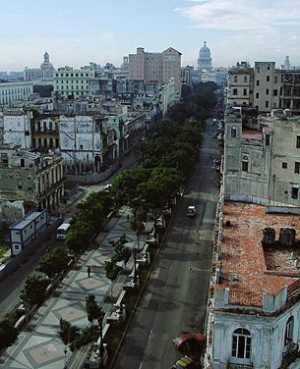 Finding the address for Rigondeaux’s wife and children was easier than I thought it would be—even if going there might ensure that I’d be banished for it. Someone on the street drew me a map with directions—but only after telling me that to visit Havana was paradise, to live there was hell. He was trying to sell his house to go back to Spain.
Finding the address for Rigondeaux’s wife and children was easier than I thought it would be—even if going there might ensure that I’d be banished for it. Someone on the street drew me a map with directions—but only after telling me that to visit Havana was paradise, to live there was hell. He was trying to sell his house to go back to Spain.
“Would you leave tomorrow if you could sell it?” I asked him.
“Please,” he laughed, handing me the map after he was finished sketching. “I would leave tonight.”
I asked how he knew the directions were accurate and he smiled and asked me to stop any taxi on the street, secure a ride, and then ask them to take me to the address he’d written down. I tried this twice and both drivers gave me an incredulous look before driving off.
This was real danger in a land where, if there was a suggestion you were sympathetic to one of the most famous living traitors, your whole life was at hazard. Maybe not just your life, either. Anyone close to you. Scores are settled here, and in a hurry. There aren’t any tag-backs either. While you aren’t likely to meet a people more generous, nobody can hold a grudge like Cubans.
I finally got to the little green house Rigondeaux had been given by the government for his achievement as an Olympic champion, and knocked on the door. There was his wife, Farah Colina Rigondeaux , along with their two children, Guillermo Jr. (eight-years-old) and Cesar (17-years-old).
I explained who I was, unsure of how she’d react. I’d spent a lot of time with her husband after his escape and respected a great deal about him in the process. After a pause she invited me in with a warm smile, as if I were a neighbor. Fourteen years this woman had spent with Rigondeaux before he escaped. The living room looked exactly the same as when the international news crews had covered one of the most famous defections in Cuban history. Small TV in the corner, a couch, a few pictures on the wall of the family together, some medals and trophies from Rigondeaux’s career, blinds drawn.
She broke the ice by telling me she’d met him at one of his fights. He noticed her in the crowd while he was sitting on his stool between rounds. She laughed until she was about to cry.
Suddenly Farah’s expression changed as she assured me the police were tracking me and asked that I be very careful for the rest of my time in Havana. “Your phone, email, movements, everything. Beeg Brother knows everything.”
My camerawoman had visited a central police station and told me that for every two cameras in Havana (which in many areas was nearly every block) there was one policeman assigned. As a precautionary measure, after the visit I left my apartment and stayed somewhere else and, sure enough, the police came to my previous apartment and took people in for questioning.
I began by telling Farah that, while she knew absolutely nothing about me, I’d spent the last three years learning everything I could about her family’s situation. I also told her that the only reason I was able to come to Cuba to work on my film about her husband was because I’d had a camera and half my footage stolen in Ireland during Rigondeaux’s last fight over the Saint Patrick’s Day weekend. There was some organized heist meant to steal Rigondeaux’s championship belt and by mistake they’d stolen the wrong bag and got my equipment and material. I didn’t have anywhere close to enough money to continue (I’d long since maxed out all my credit cards to keep going). But in revenge I’d bet the last of my production budget on Rigondeaux winning by knockout in the first round at 20-1 odds. Enough to keep going. Enough to get back to Cuba. Enough to take the biggest risk of all and bring some footage of Rigondeaux back to his family and vice versa as way of repaying the debt of him allowing me to cover his story. Nobody else in his camp would go near betting on it, but when I asked Rigondeaux he just smiled—bearing the gold teeth he’d once told me were the result of melting one of his Olympic medals into his mouth—and suggested I put my life savings on it. Rigondeaux’s wife loved this detail. After he won and saw me step into the ring he laughed (one of the rare times I ever saw him laugh with any joy) and held out his wrapped up hand, “So where’s my cut? I did it for you.”
I showed her the picture of that moment from my camera:
With her family we looked over photos and video of her husband. In the back of my mind I was wondering how much time we had before there might be an ominous knock at the door.
“He looks very sad, doesn’t he,” she said. “I know he misses us. We miss him.”
Farah told me the last things he said to her before leaving, even though he couldn’t risk telling her when he was leaving. She told me how he stayed home from work so he could play with his small son. She told me that he called her the moment he arrived safely in Miami and that the journey—through a horrible storm—had been the most frightening of his life. She cried talking about how much Rigondeaux’s mother’s death had affected him shortly after he made it to Miami. She said his miserable performance winning the world championship in Dallas (which had nearly totally derailed his career) was because his son had gotten sick and he was terrified and guilt-ridden he’d lose the boy as he’d done with his mother, without being able to help or be with them. Farah assured me he called regularly and sent money. She assured me he was a decent human being and the love of her life. She assured me—and also her family at the same time—that he would never abandon them.
I’d had enormous trouble attempting to define Rigondeaux regardless of how much had been said about him or what he represented about Cuba and the United States. What was this human being fighting for everywhere but inside a ring? How much is revealed by what anyone fights for? Joe Louis took on the Nazis when he knocked out Schmeling. It was one of the first times white America gave a shit about a black man too. Ali took on Vietnam. Rigondeaux, like his time, was a lot more ambiguous. As with most Cubans who escaped or remained, he’d always been like a living double-exposed photograph imprisoned by an impossible choice.
Seeing is never believing. It always works the other way around. Far more people believe in angels than climate change.
Are you brave if you stay or if you leave? Depends who you ask. But nobody could have more incentive than Rigondeaux’s wife to speak badly of him for abandoning his family on some kind of opportunistic excursion while she stayed and suffered the fallout of his betrayal. Yet she spoke of his dignity in such an insane situation and when she touched on his pain she expressed her own on his behalf. She said the defining characteristic of her husband was his sensitivity.
This fact reminded me about when I’d interviewed Guillermo Rigondeaux two days before his last fight in Dublin on March 19th, 2011. He still refused to offer any details of the smuggler’s boat journey. However the expression on his face offered some explanation. The bitterness behind his eyes suggested anything he got in America in exchange for leaving his home wasn’t much better than collecting diamonds on some deserted island in the hopes one day he’d be rescued.
Twenty minutes after the interview was over, the translator knocked on my hotel room door.
“I wanted to tell you something. After you left he told me about it. But he doesn’t want people to know. He said it was the most frightening experience of his life. The Mexican officials were even worse than the boat ride…”
And then he saved the worst for last:
“He didn’t want to tell you because he didn’t want you to think he was a coward.”
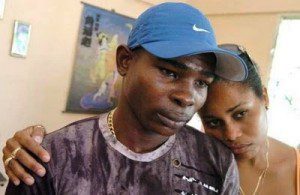 I asked Guillermo’s eight year-old son, who shares his father’s name, what he thought of the father he hadn’t seen in over two years. I asked if it was hard carrying a name like his in a land that had condemned his father as the worst kind of traitor. He gave me a hard look for a second and ran into his room. Before I could apologize to his mother he ran back out to the living room with a poster of his dad and opened it up for me to see. The poster was bigger than him. “I miss him. I miss watching him fight. My father is my hero. ”
I asked Guillermo’s eight year-old son, who shares his father’s name, what he thought of the father he hadn’t seen in over two years. I asked if it was hard carrying a name like his in a land that had condemned his father as the worst kind of traitor. He gave me a hard look for a second and ran into his room. Before I could apologize to his mother he ran back out to the living room with a poster of his dad and opened it up for me to see. The poster was bigger than him. “I miss him. I miss watching him fight. My father is my hero. ”
Rigondeaux’s wife smiled at her son and turned her face to me, “He’s both our heroes.”
Together with the other things she’d said, these were the first warm things about him as a person that I’d ever heard. I’d only ever heard him appraised as a political weapon for and against Fidel, as merchandise, and as the finest boxer who ever lived.
The boxing historian Burt Sugar gave me shit once at one of Rigondeaux’s fights when I asked him how fighters could be so routinely taken advantage of by everyone around them.
“Don’t you know anything kid? Boxers avoid confrontation everywhere except the fuckin’ ring.”
***
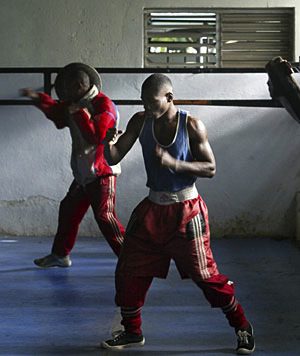 Harvey Milk said that while you can’t live on hope alone, without hope life isn’t worth living. I still believed it when I first met Rigondeaux in Cuba in 2007. Catching up with him in the US has been harder.
Harvey Milk said that while you can’t live on hope alone, without hope life isn’t worth living. I still believed it when I first met Rigondeaux in Cuba in 2007. Catching up with him in the US has been harder.
Something tells me that no matter what the restrictions were regarding baggage limits on that smuggler’s boat, none were traveling light. During the journey Rigondeaux and the rest of the people on that vessel left everything they’d ever known behind, perhaps forever. But the weight of their hope was their greatest vulnerability. Where could you hide it? Were the smugglers doing you a favor making it nearly impossible to bring any hope? Were you expected to smuggle it on board? Remember that where smuggling is concerned C.O.D. doesn’t stand for cash on delivery; it stands for cash or death. Yours. That’s why the captain of the boat is toting a shotgun in case you raise a fuss or something goes wrong with the plan. So viva go fuck yourself my little communist friend.
Right back to Turner’s painting of the passengers of the Zong: hope on the marketplace.
A few days later I’d arranged to meet with Farah Rigondeaux a second time. While she’d invited me, she’d never answered her phone to confirm the time. Under the table I’d hired a translator and cinematographer from Cuban television to accompany me. Both were dead certain “security” had gotten to her and were closing in on us. I was still having trouble wrapping my mind around getting arrested for sniffing around a story that highlighted the fallout of leaving the island as much as exploring their reasons for wanting to escape or remain.
“If she has not answered the phone, we should not be doing this,” my translator warned. “We will get arrested. We will lose our jobs. Our friends or family might lose their jobs. This is a vindictive system. It will not be pleasant for you either. There is a reason so few people will even talk with you.”
The cinematographer agreed solemnly. “This is a very dangerous place to go right now.”
***
We arrived at Farah’s house and climbed the stairs. Her son peeked out the window and told me his mother had left Havana for La Lisa to visit a dying relative. He was a very sad liar. He immediately tried to shut the window before saying anything else. I managed to keep him for long enough to ask him if he’d like to talk for a minute. He subtly gestured toward the direction of the camera pointed at their house. “You should leave now,” he said. “I’m sorry.”
We drove back down the hill, and the driver let me out near the Prado. I walked there for the last time and boarded my plane the next day, understanding even less than my first time leaving how easy it was to be cast away from a place so many could not hope to escape.

